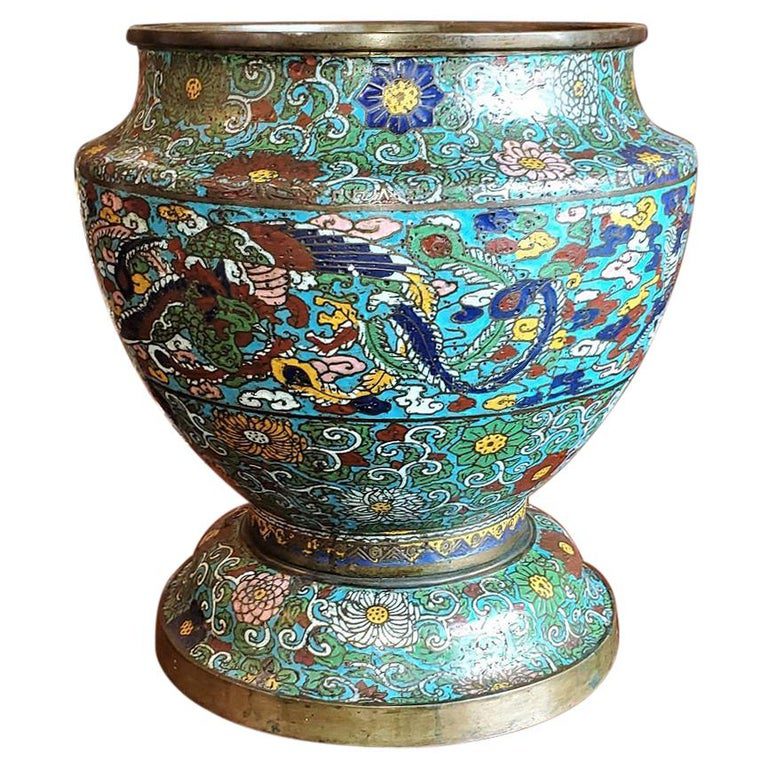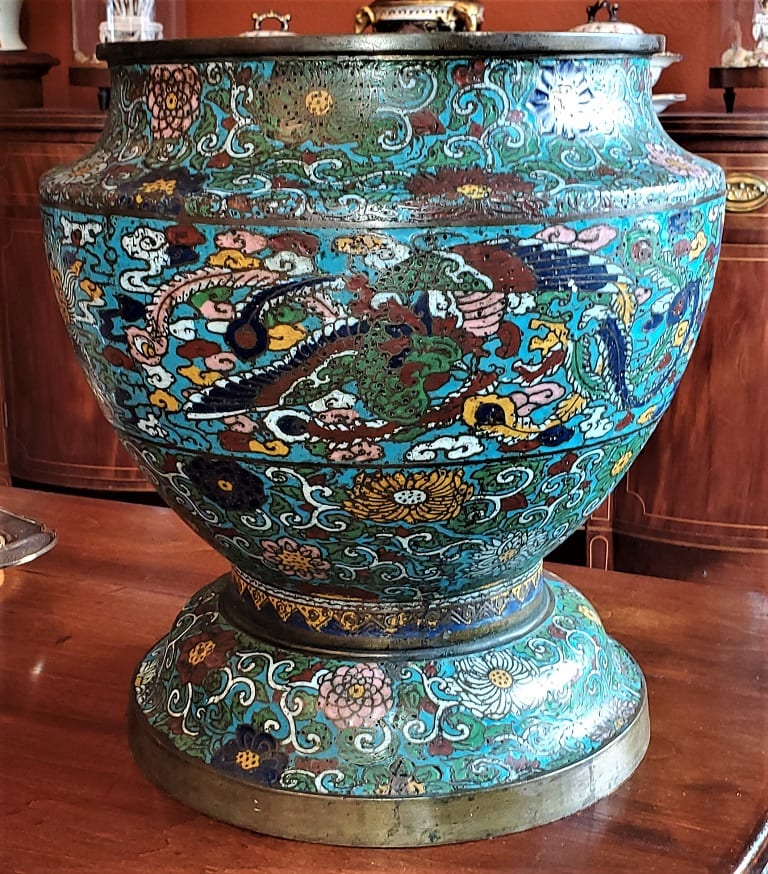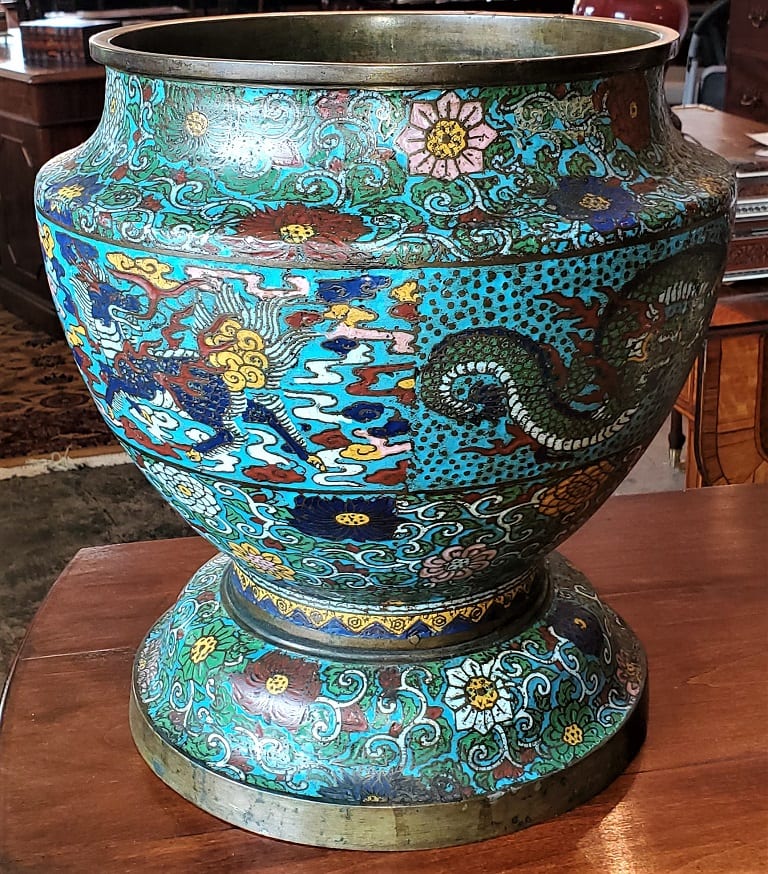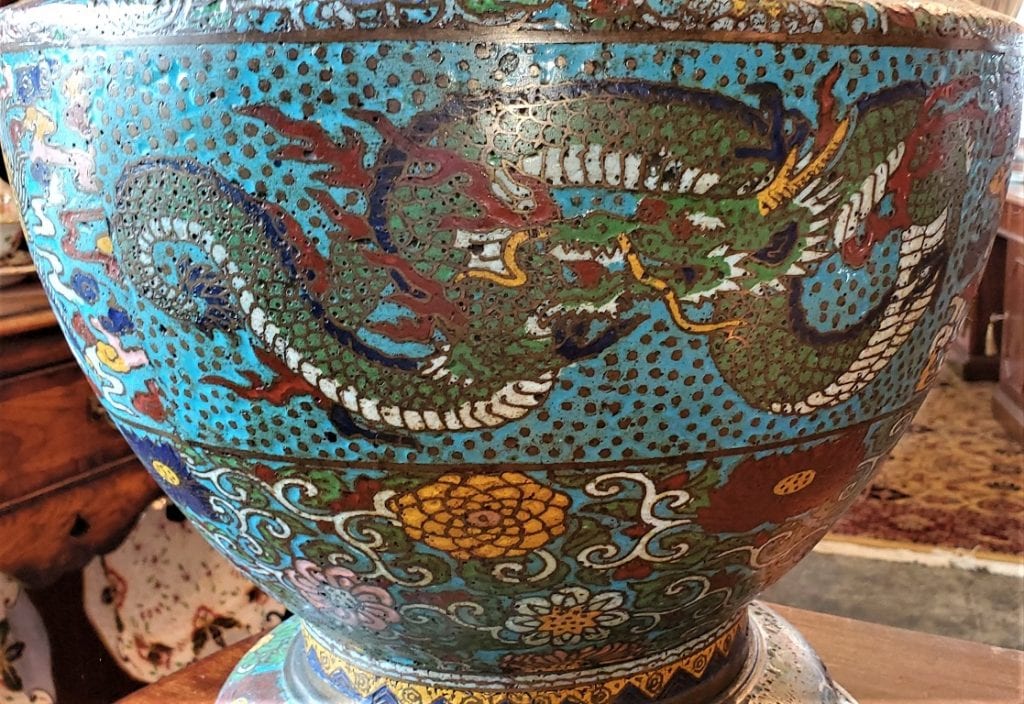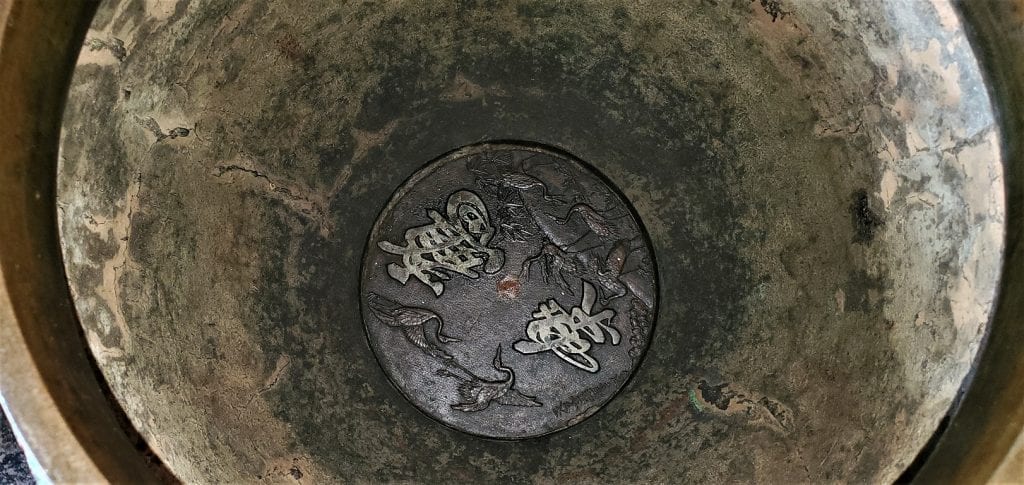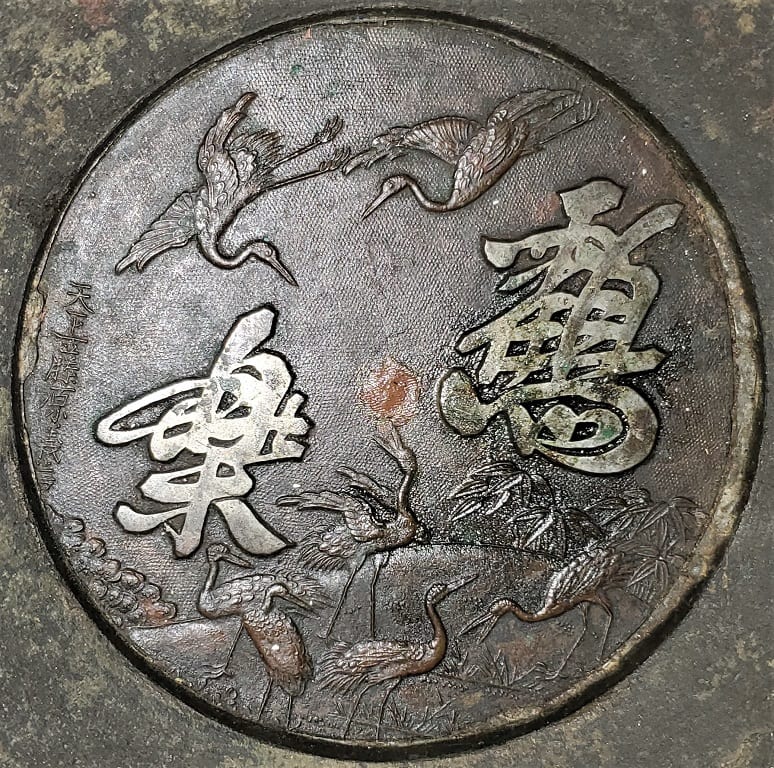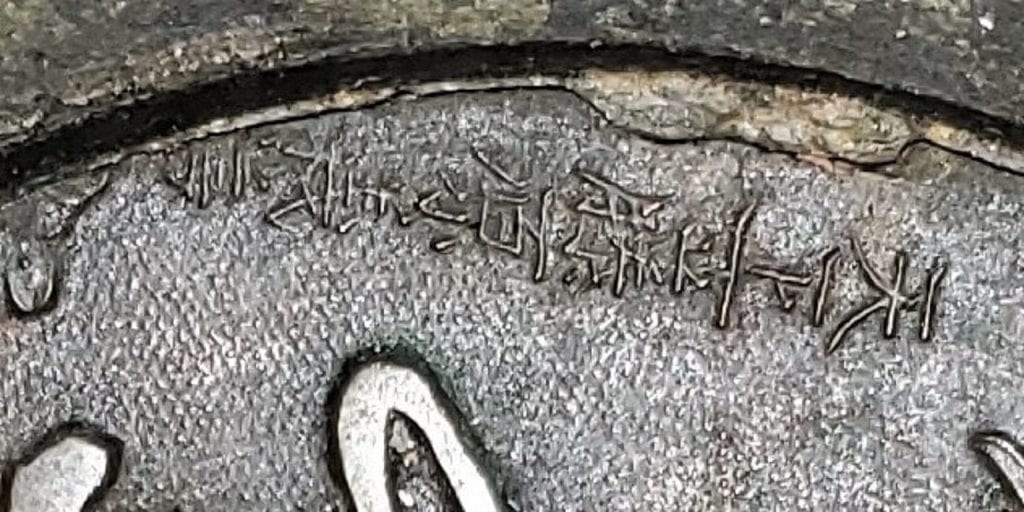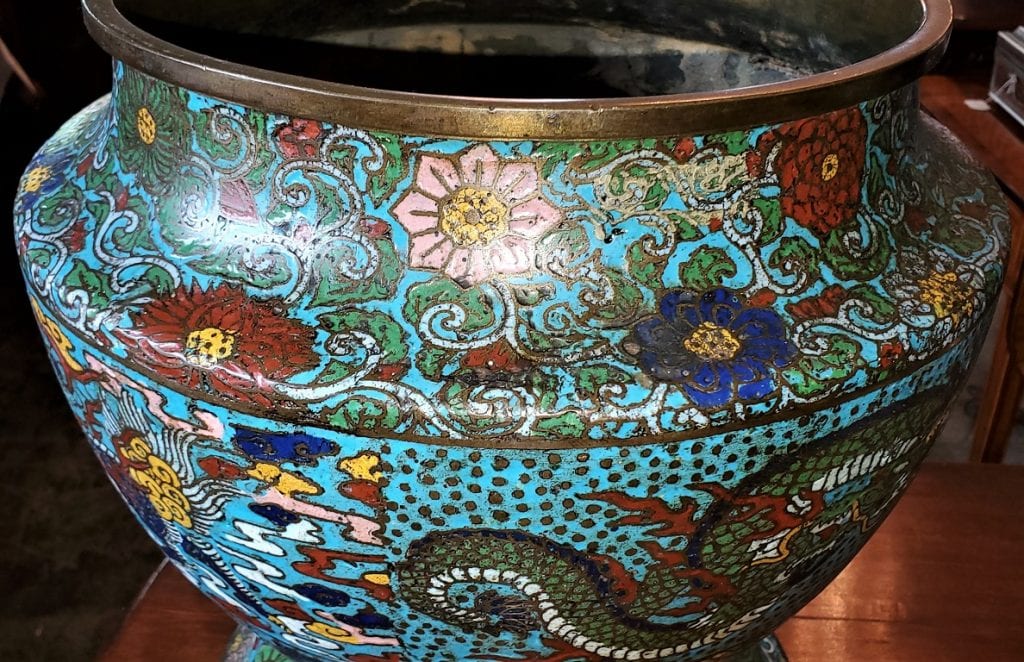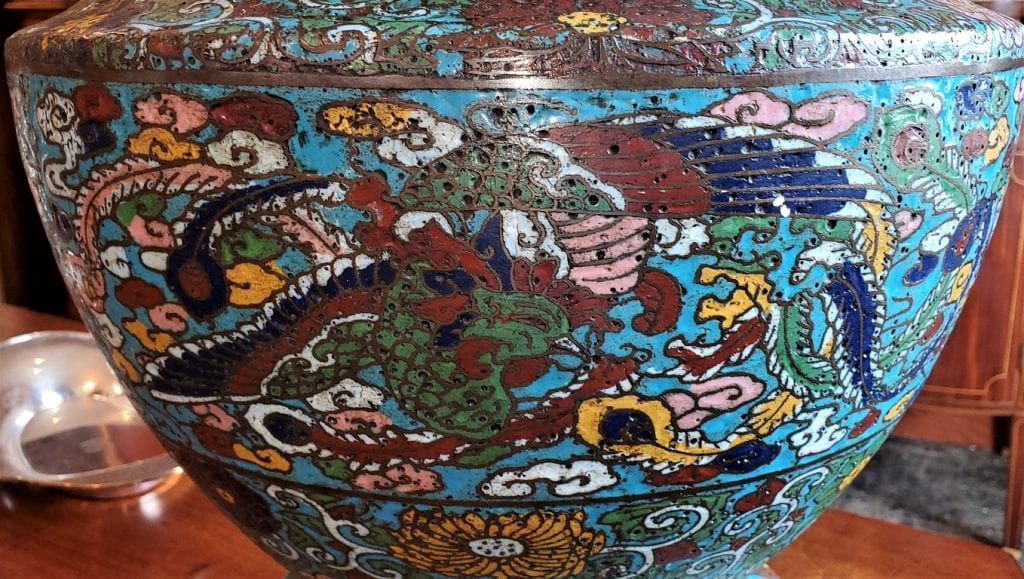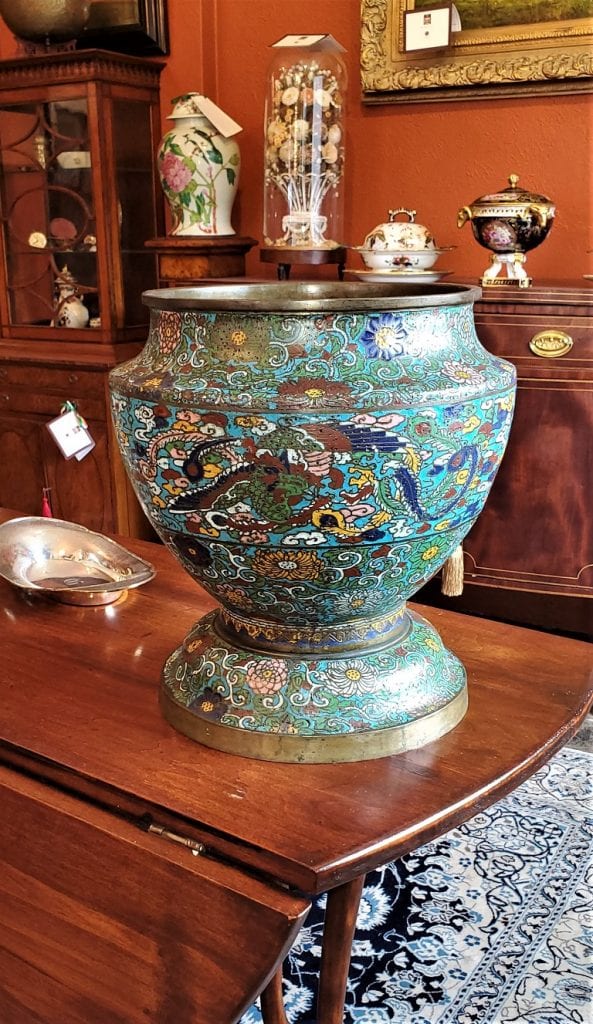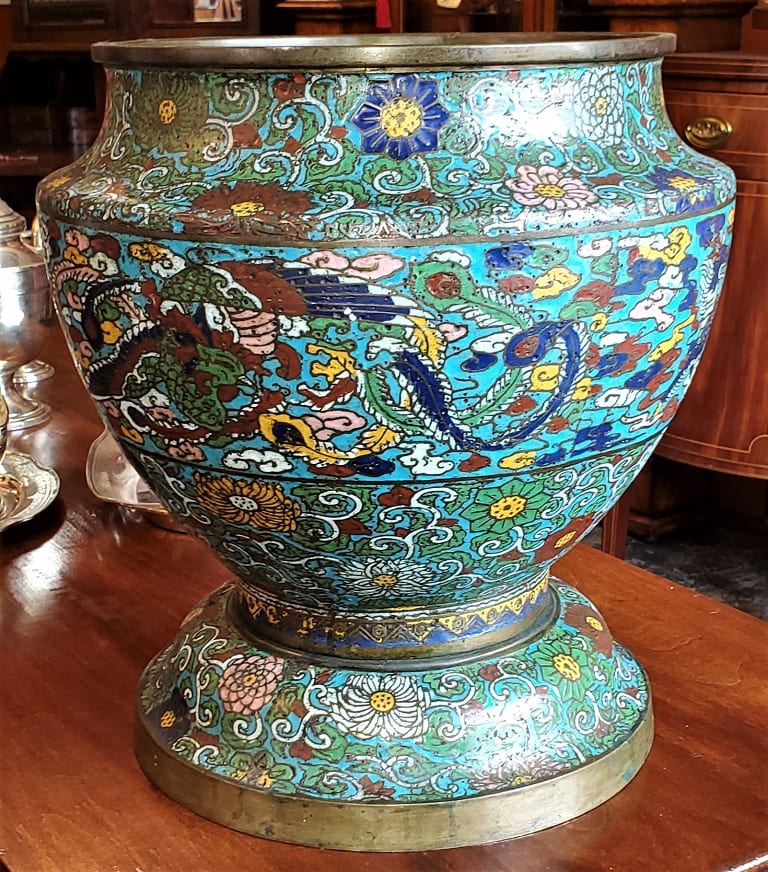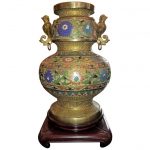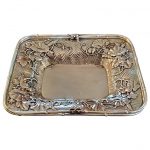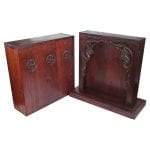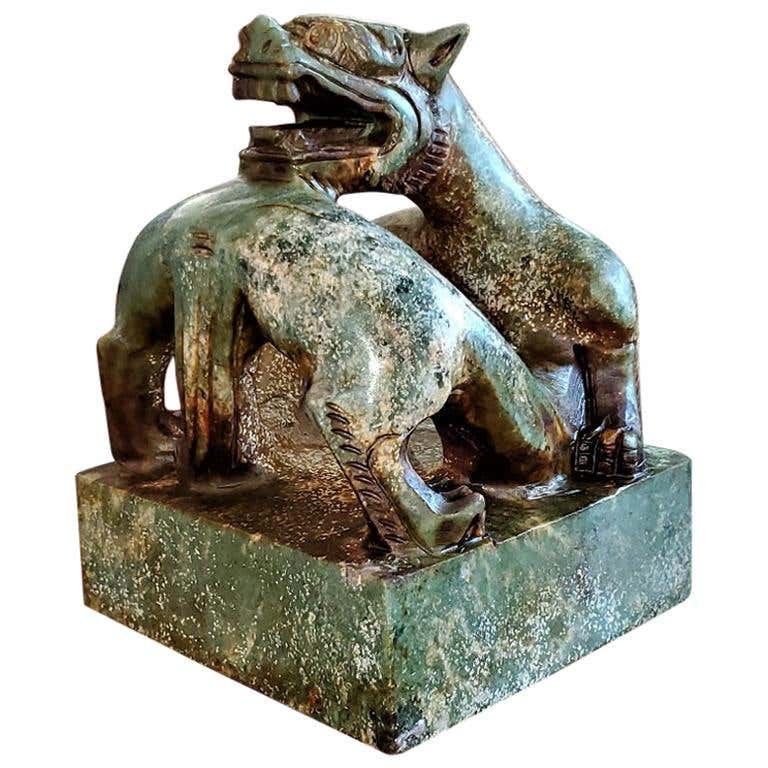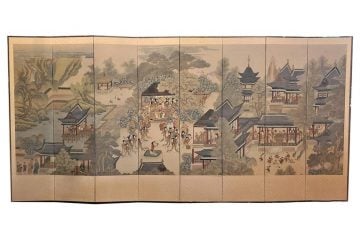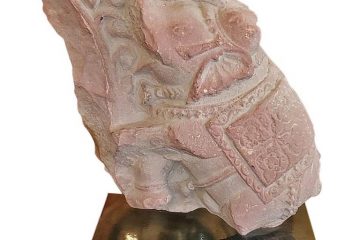Japanese Meiji Champleve and Bronze Urn
PRESENTING a GORGEOUS Japanese Meiji Champleve and Bronze Urn.
Made in Japan during the Meiji Period circa 1880.
The body of the urn is cast bronze and it is entirtely covered in various colored enamels in the manner of Champleve, depicting dragons, birds of paradise and floral motiff’s.
The pithing to the enamel is indicative of it’s genuine age and the bronze has a naturally aged patina. The inside of the urn likewise exhibits real age.
It is very unusual to find champleve pieces that cover almost the entirety of the piece.
At some stage in it’s life (we believe circa 1920-ish) someone decided to convert this into a table lamp. Not only that, but they replaced the interior base (which had probably corroded with use as a planter) with the backing of a Japanese Bronze Mirror. They then drilled a hole in the base and side for wiring. Both are now filled. The mirror is intriguing in itself. It appears to have been a quality mirror as the symbols, script and decoration as quite exceptional. It is impossible to tell if it was a reproduction of a 16th Century Japanese hand Mirror and the symbols appear to indicate that it was made in the Tensho Area in 1580 and a signature. Other symbols seen to indicate ‘Heaven’ and ‘Crane”. Because it was used to replace a base I would err on the side of caution and form the opinion that it was a reproduction hand mirror, albeit a very high quality one !
There is one minor crack where the base meets the enamel, but it does not adversely affect the piece.
Large and impressive piece measuring 14 inches tall and with a diameter of 14 inches.
A STUNNING EXAMPLE OF MEIJI JAPANESE CHAMPLEVE !
Tenshō (天正) was a Japanese era name (年号, nengō, “year” name) after Genki and before Bunroku. This period spanned the years from July 1573 through December 1592. The reigning emperors were Ōgimachi-tennō (正親町天皇) and Go-Yōzei-tennō (後陽成天皇).
The Meiji era (明治, Meiji, Japanese pronunciation: [meꜜː(d)ʑi]) is an era of Japanese history which extended from October 23, 1868 to July 30, 1912. This era represents the first half of the Empire of Japan, during which period the Japanese people moved from being an isolated feudal society at risk of colonization by Western powers to the new paradigm of a modern, industrialized nation state and emergent great power, influenced by Western scientific, technological, philosophical, political, legal, and aesthetic ideas. As a result of such wholesale adoption of radically different ideas, the changes to Japan were profound, and affected its social structure, internal politics, economy, military, and foreign relations. The period corresponded to the reign of Emperor Meiji. It was preceded by the Keiō era and was succeeded by the Taishō era, upon the accession of Emperor Taishō.
To convert any Gregorian calendar year between 1868 and 1912 to Japanese calendar year in Meiji era, 1867 needs to be subtracted from the year in question.
Link: https://en.wikipedia.org/wiki/Meiji_(era)
Champlevé is an enamelling technique in the decorative arts, or an object made by that process, in which troughs or cells are carved, etched, die struck, or cast into the surface of a metal object, and filled with vitreous enamel. The piece is then fired until the enamel fuses, and when cooled the surface of the object is polished. The uncarved portions of the original surface remain visible as a frame for the enamel designs; typically they are gilded in medieval work. The name comes from the French for “raised field”, “field” meaning background, though the technique in practice lowers the area to be enamelled rather than raising the rest of the surface.
The technique has been used since ancient times, though it is no longer among the most commonly used enamelling techniques. Champlevé is suited to the covering of relatively large areas, and to figurative images, although it was first prominently used in Celtic art for geometric designs. In Romanesque art its potential was fully used, decorating caskets, plaques and vessels, in Limoges enamel and that from other centres.
Champlevé is distinguished from the technique of cloisonné enamel in which the troughs are created by soldering flat metal strips to the surface of the object. The difference between the techniques is analogous to the woodworking techniques of intarsia and marquetry. It differs from the basse-taille technique, which succeeded it in the highest quality Gothic work, in that the bottoms of the recesses for the enamel are rough, and so only opaque enamel colours are used. In basse-taille the recesses are modelled, and translucent enamels are used, for more subtle effects, as in the 14th century Parisian Royal Gold Cup.
Link: https://en.wikipedia.org/wiki/Champlev%C3%A9
Japanese Meiji Champleve and Bronze Urn.
Provenance: From a Private East Texas Collection.
Condition: Overall very good. See full description.
Dimensions: 14″ Tall and Diameter of 14 inches
SALE PRICE NOW: $1,400
